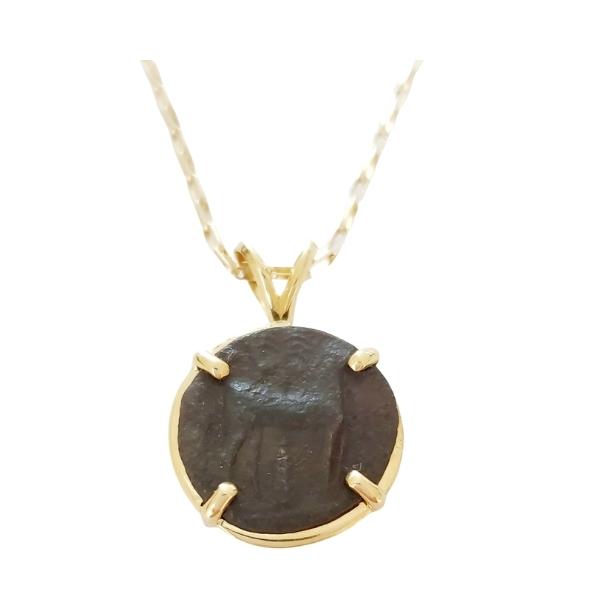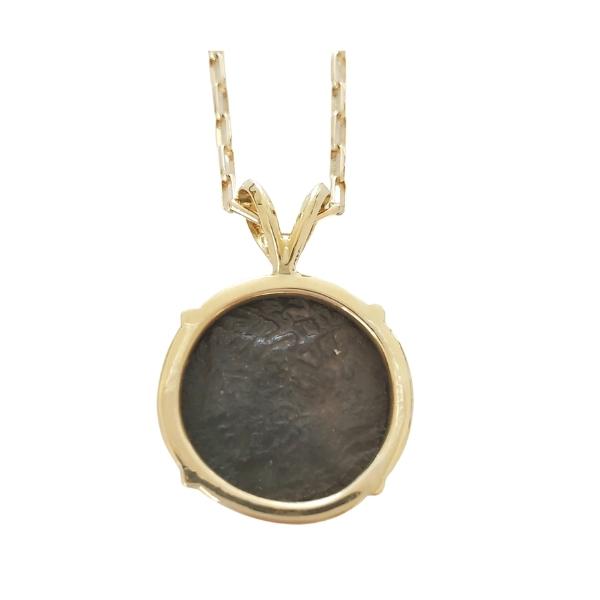


Greek Bronze Carthage Horse 3rd Century BC (040)
This ancient Greek bronze coin features an elegant horse with a date palm in the background, typical of Carthaginian coinage. The reverse side of the pendant features the goddess Tanit wearing a wreath of corn.
Size: 16mm
Hand-fabricated 18kt recycled gold mount.
One of a kind with a Certificate of Authenticity.
Chain not included; available separately. See Chains
Dated: late 4th - early 3rd century BC
Greek bronze coin from Zeugitania, Carthage. (Coastal North Africa, Tunisia)
Carthage, near modern Tunisia, was founded c. 814 BC by Dido, sister of King Pygmalion of Tyre. With its superior location near the sea, the Carthaginians expanded their Western Mediterranean trading empire to include Sicily. Curiously, the Carthaginians didn't begin to issue coined money before their second invasion of Sicily in 409 BC. The style of artwork indicates that Greek artists were employed in the Carthaginian mints.Tanit, chief goddess of Carthage, an equivalent of Astarte. She was a mother goddess, a goddess of war. Fertility symbols often accompany representations of her.
Choose options



This ancient Greek bronze coin features an elegant horse with a date palm in the background, typical of Carthaginian coinage. The reverse side of the pendant features the goddess Tanit wearing a wreath of corn.
Size: 16mm
Hand-fabricated 18kt recycled gold mount.
One of a kind with a Certificate of Authenticity.
Chain not included; available separately. See Chains
Dated: late 4th - early 3rd century BC
Greek bronze coin from Zeugitania, Carthage. (Coastal North Africa, Tunisia)
Carthage, near modern Tunisia, was founded c. 814 BC by Dido, sister of King Pygmalion of Tyre. With its superior location near the sea, the Carthaginians expanded their Western Mediterranean trading empire to include Sicily. Curiously, the Carthaginians didn't begin to issue coined money before their second invasion of Sicily in 409 BC. The style of artwork indicates that Greek artists were employed in the Carthaginian mints.Tanit, chief goddess of Carthage, an equivalent of Astarte. She was a mother goddess, a goddess of war. Fertility symbols often accompany representations of her.
